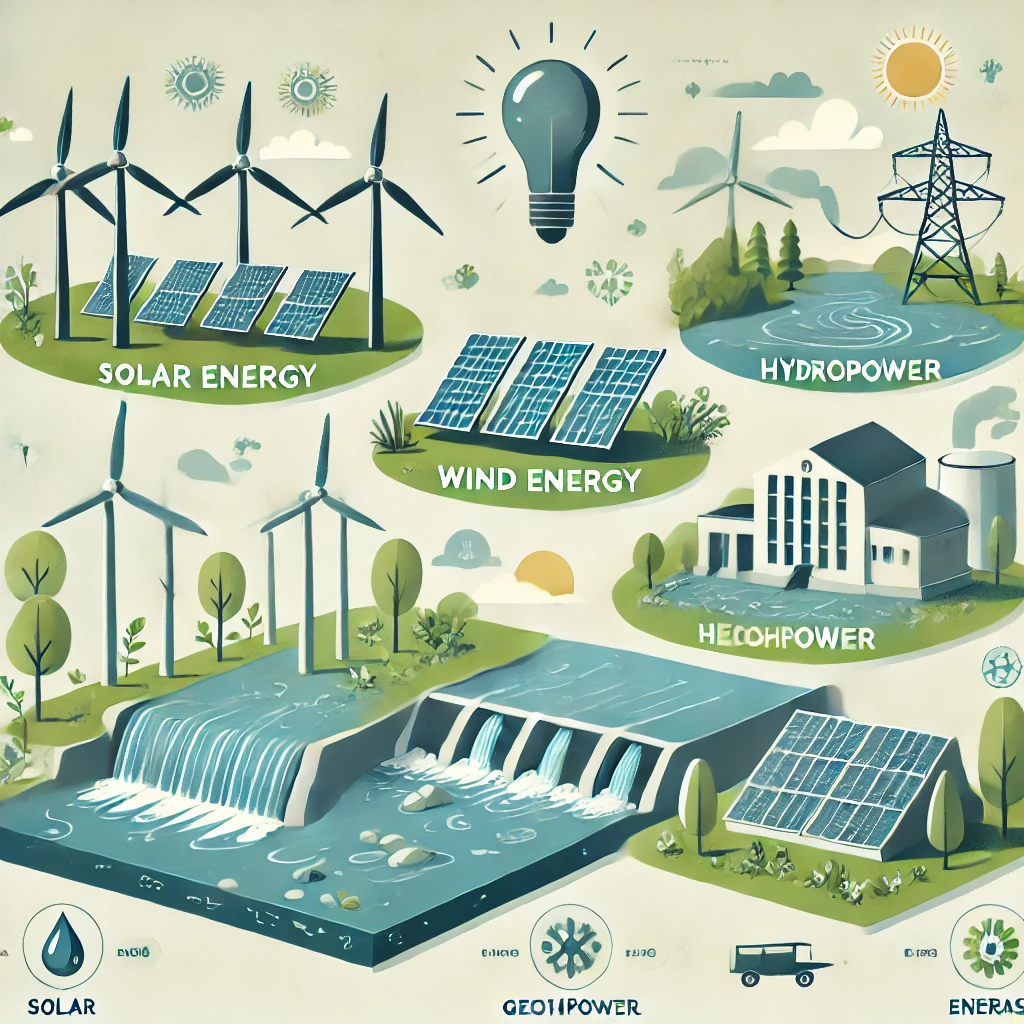Technology October 19, 2024
Types of Renewable Energy Sources and Role in Combating Climate Change

Types of Renewable Energy Sources
-
Solar Power Solar power harnesses energy from the sun using photovoltaic (PV) cells that convert sunlight into electricity. Solar energy is abundant, and technological advancements have made solar power one of the fastest-growing sources of clean energy. Solar panels can be installed on residential rooftops, in commercial buildings, or in large solar farms, making it highly scalable.
-
Wind Energy Wind energy is generated using turbines that capture the kinetic energy of wind and convert it into electricity. Wind farms, both onshore and offshore, are becoming more prevalent as wind power becomes more cost-effective. Offshore wind energy, in particular, holds great potential due to stronger and more consistent winds over the ocean.
-
Hydropower Hydropower generates electricity by harnessing the energy of flowing or falling water. Dams, rivers, and tidal systems can be used to capture this energy and generate clean electricity. Hydropower has been a reliable source of renewable energy for decades, providing consistent energy output. However, it can impact local ecosystems if not managed carefully.
-
Geothermal Energy Geothermal energy taps into the Earth’s internal heat to generate electricity or provide heating. Geothermal plants are usually located in regions with high volcanic or tectonic activity. This form of energy is both sustainable and highly reliable, as the Earth's heat is essentially inexhaustible.
-
Biomass Biomass energy is produced from organic materials like wood, agricultural waste, and other plant-based substances. When burned or processed, biomass releases energy that can be used for heating, electricity generation, or as biofuels for transportation. Unlike fossil fuels, biomass is considered carbon-neutral, as the carbon emitted during combustion is offset by the carbon absorbed during the plant’s growth.
The Role of Renewable Energy in Combating Climate Change
-
Reducing Greenhouse Gas Emissions The primary role of renewable energy in fighting climate change is the reduction of GHG emissions. By replacing fossil fuel-based power plants with renewable energy sources, we can significantly decrease the amount of CO2 and other harmful gases being released into the atmosphere. Countries like Germany, Denmark, and Costa Rica have made significant strides in integrating renewable energy into their power grids, leading to a measurable reduction in their carbon footprints.
-
Decentralizing and Democratizing Energy Renewable energy technologies, especially solar and wind, offer the potential for decentralized energy systems. This means that individuals, communities, and small businesses can generate their own power, reducing reliance on centralized fossil fuel-based power plants. This not only empowers communities but also increases energy security and resilience in the face of climate disruptions.
-
Creating a Sustainable Energy Mix No single energy source can solve the climate crisis alone. However, by integrating a diverse mix of renewable energy sources, countries can build sustainable energy systems that are resilient, adaptable, and less prone to disruption. For instance, a combination of solar and wind energy can help balance power supply across different weather conditions, while hydropower and geothermal can provide consistent baseline energy.
-
Promoting Green Jobs and Economic Growth Transitioning to renewable energy is not just an environmental imperative; it also offers significant economic benefits. The renewable energy sector has created millions of jobs worldwide, from solar panel installers to wind turbine technicians. As the demand for clean energy grows, so does the potential for job creation in these sectors. Furthermore, investments in renewable energy infrastructure stimulate local economies and reduce long-term energy costs.
Sharing is sexy
Latest article
- Troubleshooting Guide: Resolving cURL Error 60 (SSL Certificate Problem) During Auth0 Callback
- Exploring the Sacred Arupadai Veedu: The Mythical Journey of Lord Murugan's Six Abodes
- The Start and Spread of Coronavirus: A Timeline
- Challenges in the Transition to Renewable Energy and The Future
- Types of Renewable Energy Sources and Role in Combating Climate Change
Categories
Topics
AI Artificial Intelligence CGI cinema error Hanuman php rajinikanth
Administrator